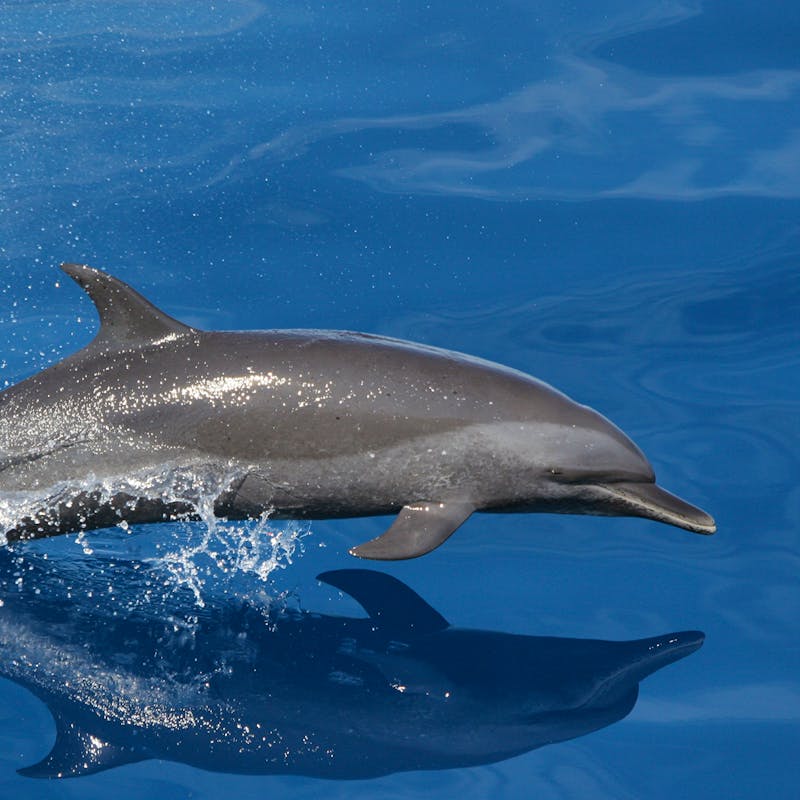Elizabeth Fleming, Florida Representative
Of the world’s seven species of sea turtles, six are found in U.S. waters or nest on U.S. beaches: green, hawksbill, Kemp’s ridley, leatherback, loggerhead and olive ridley. The seventh species, the flatback turtle, is found only in Australia. At one time, millions of sea turtles swam in our oceans — but now all sea turtle species in U.S. waters are listed as endangered or threatened under the Endangered Species Act (ESA). The protection of the ESA is actually a major reason that we still have sea turtles swimming our oceans today.
Sea turtles have been around for about 110 million years — since dinosaurs roamed the Earth. While sea turtles were exploited for centuries for their meat, demand escalated during European exploration of the Americas and the green turtle was nearly exterminated. In the 1950s and 1960s, expanding international markets for sea turtle shell, skin and other products were taking a toll on sea turtle populations. By the 1970s many sea turtle populations had plummeted from direct harvest. During that decade all species occurring in the U.S. were listed on the Endangered Species Act and by 1981 all species were included on the Convention on International Trade in Endangered Species (CITES), which banned international commercial trade in sea turtles and their products.
Being listed on the ESA was a turning point for sea turtles. ESA listing makes it illegal to harm, harass or kill sea turtles, hatchlings or their eggs, or to import, sell, or transport sea turtles or their products. Once sea turtles were listed, federal agencies developed recovery plans and started programs cooperating with states for sea turtle conservation. They also created new regulations to reduce the number of turtles accidentally caught in fisheries and developed plans to acquire and protect important sea turtle habitat.

Green turtles are endangered in the U.S. Photo courtesy Andy Bruckner, NOAA
The listing also compelled the U.S. Fish and Wildlife Service and National Marine Fisheries Service to consult with other federal agencies on projects they fund, permit, or conduct to ensure that they do not cause harm to sea turtles or their habitat. These new protections included important regulations requiring turtle excluder devices or TEDs in U.S. shrimp nets that were passed under the authority of the ESA to prevent the deaths of thousands of sea turtles each year. The United States also cooperates with other countries to protect sea turtles. For example, in 2004, Congress passed the Marine Turtle Conservation Act to provide funding for conserving sea turtles and their nesting habitat in other countries. The Act recognizes the global plight of sea turtles and the need for close cooperation among countries, and provides the U.S. Fish and Wildlife Service support for on-the-ground conservation initiatives to benefit sea turtles.
ESA listings are relevant at the state level as well as the federal and most states where sea turtles nest have now passed additional laws to protect turtles. In Florida, for instance, the Marine Turtle Protection Act gives state agencies the power to enforce regulations that protect turtles and their habitat. States coordinate extensive monitoring and research efforts on nesting beaches. Some local governments have also passed regulations to eliminate or control artificial beachfront lighting, which deters females from nesting and disorients hatchlings.
Even though the Endangered Species Act is a U.S. law, it has made a big difference to sea turtle recovery on a global scale. Sea turtles are highly migratory — over the course of their lives they will live not only off the U.S. coast but in waters of other countries. Because sea turtles rely upon different habitats during their lifetimes and migration, they are vulnerable on multiple fronts, and conservation efforts for turtle populations in one country may be undermined by activities in another. It is critical that all nations cooperate to ensure the survival of sea turtles.

Loggerhead Sea Turtle (Photo: NOAA)
In North America, sea turtles primarily nest from North Carolina through Florida and along the beaches of the northern Gulf of Mexico, with over 90% occurring in Florida which hosts a globally-important nesting population of loggerhead turtles. Numbers of nesting leatherback and green turtles have been steadily increasing in Florida. Considering that green turtles were on the brink of extinction in the late 20th century, the resurgence of this species in Florida is cause for celebration.
Because the ESA encourages habitat to be protected for listed species, Congress established the Archie Carr National Wildlife Refuge in 1991 to protect federally endangered and threatened sea turtles. The Refuge offers hope for saving one of the most important sea turtle nesting sites in the world along a 20.5-mile stretch of beach on Florida’s east central coast. It contains long stretches of quiet, undisturbed sandy beaches, with little or no artificial light, that are essential to the reproductive success and survival of sea turtles. The refuge also includes the most significant area for loggerhead sea turtle nesting in the Western Hemisphere, the most important nesting beach for green turtles in North America and a small but quickly growing rookery for leatherbacks.
While several sea turtle populations have improved since being listed on the ESA and CITES, serious threats remain. Turtles are accidentally caught in commercial fishing operations, often drowned in nets or caught on lines intended for other types of marine life, or can accidentally eat or get caught up in plastic or other debris. The turtles’ coastal habitat is also in trouble – development is a constant threat to nesting grounds, as is construction of seawalls and artificial light pollution. And as with so many species, a changing climate is causing swaths of the sea turtle habitat to change drastically, or even disappear.
That is why the protections provided by the ESA, along with the work we and many other organizations do to defend this important legislation, are as important today as they were when they were adopted 40 years ago. In the coming year, Defenders will build upon its work to protect sea turtles from death and injury both at sea and on U.S. and Mexican nesting beaches, continuing to focus on reducing the number of turtles that die accidentally in fisheries and expanding our work to protect Florida’s and Mexico’s important nesting beaches from harmful coastal development and disturbance.





